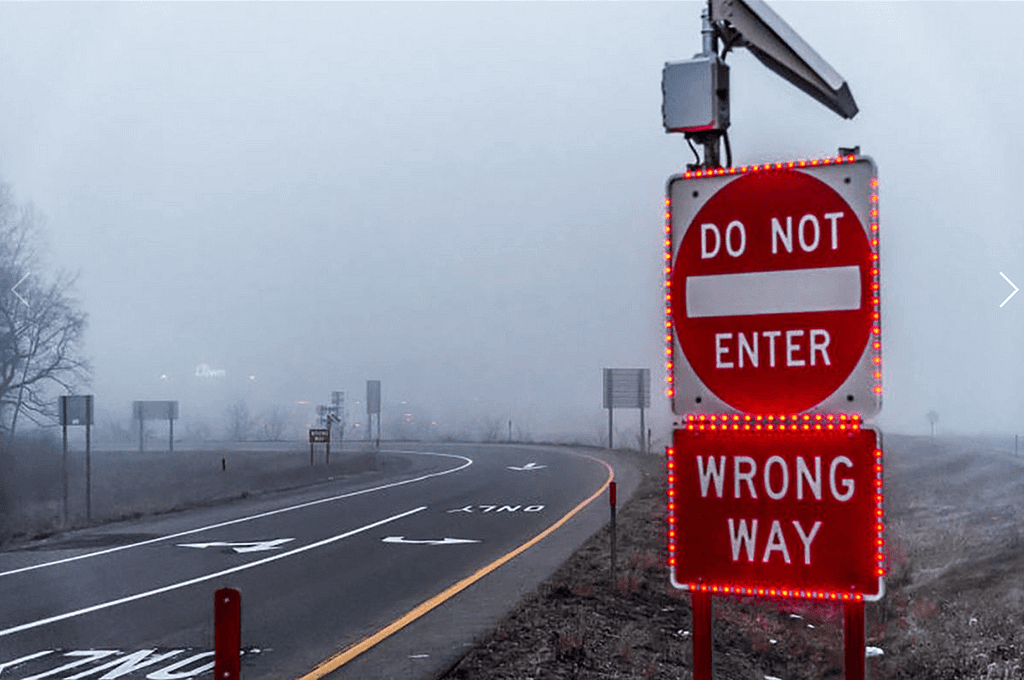An Effective Technology Solution To Protecting Drivers From Wrong Way Incidents
In the U.S., wrong-way driving fatalities have increased over the past decade. In recent years, there have been approximately 1,500 wrong-way driving fatalities in the U.S. on all roadway types. In response, transportation agencies have been investing in various technologies to help decrease the number of wrong-way driving incidents.
Advanced Mobility Analytics Group, Blue-Band, HAAS Alerts, and AWS have come together to offer transportation departments with a more robust, reliable, and cost-efficient wrong way driving detection and notification system.
A More Effective Technology Solution To Protecting Drivers From Wrong Way Incidents
Our team’s solution not only provides more accurate wrong way detection with fewer false alarms, but we can provide low-latency warnings directly to Traffic Management Centers (TMCs), to in-vehicle dashboards or apps to alert those drivers in the impacted area that are at risk, to Flashing Wrong Way Signs, to Variable Messaging Signs, to Ramp Meters, and to Traffic Signal Controllers. Our solution also provides tools that allow agencies to conduct upfront diagnostics on their interchanges across their network so they can better identify and invest in those sites with greater probability of wrong way driving incidents.
How do these technologies benefit agencies? Edge computing technologies enable our solution to detect and respond to wrong way driving events in near real-time, including sending alerts and video clips to TMC operators and actuating digital signs, variable messaging signs, ramp meters, and signal controls. Edge computing technologies can also enable our solution to identify those drivers that have self-corrected their direction so that agencies do not have to waste resources on a non-event. Machine learning models developed by transportation experts provide more accurate vehicle and direction results, enabling us to filter out false “positives”. Connected vehicle technologies enable our solutions to send warnings directly to those drivers at risk in near-real time.
While existing solutions have improved data collection on wrong way incidents, such as a better understanding of how many wrong-way drivers correct their heading after they see alerts from wrong-way roadside flashing signs, there are still a number of challenges for the industry to address.
Roadblocks to Scaling Wrong Way Solutions
One of the biggest technical shortcomings of existing solutions is that they can generate a higher than acceptable number of false calls (mistakenly detect wrong way driver incidents and send law enforcement resources where they are not needed). There are a number of reasons for this problem, including the quality and lack of training of sensor detection, classification, and trajectory capabilities.
Other roadblocks to widespread deployment of wrong-way protection systems include the high upfront costs associated with them, installing systems that may have past crash incidents but overlook locations that may have greater propensity for wrong-way driving incidents in the future, and the inability to get warning notifications in front of all drivers in the impacted areas.
Overcoming these roadblocks with research-based machine learning models, flexible integration intelligent systems that can communicate with digital signage, traffic signals, and ramp meters, and connected vehicle driver notifications are a game-changer for agencies to start scaling effective and cost-efficient wrong-way detection and notification systems.
